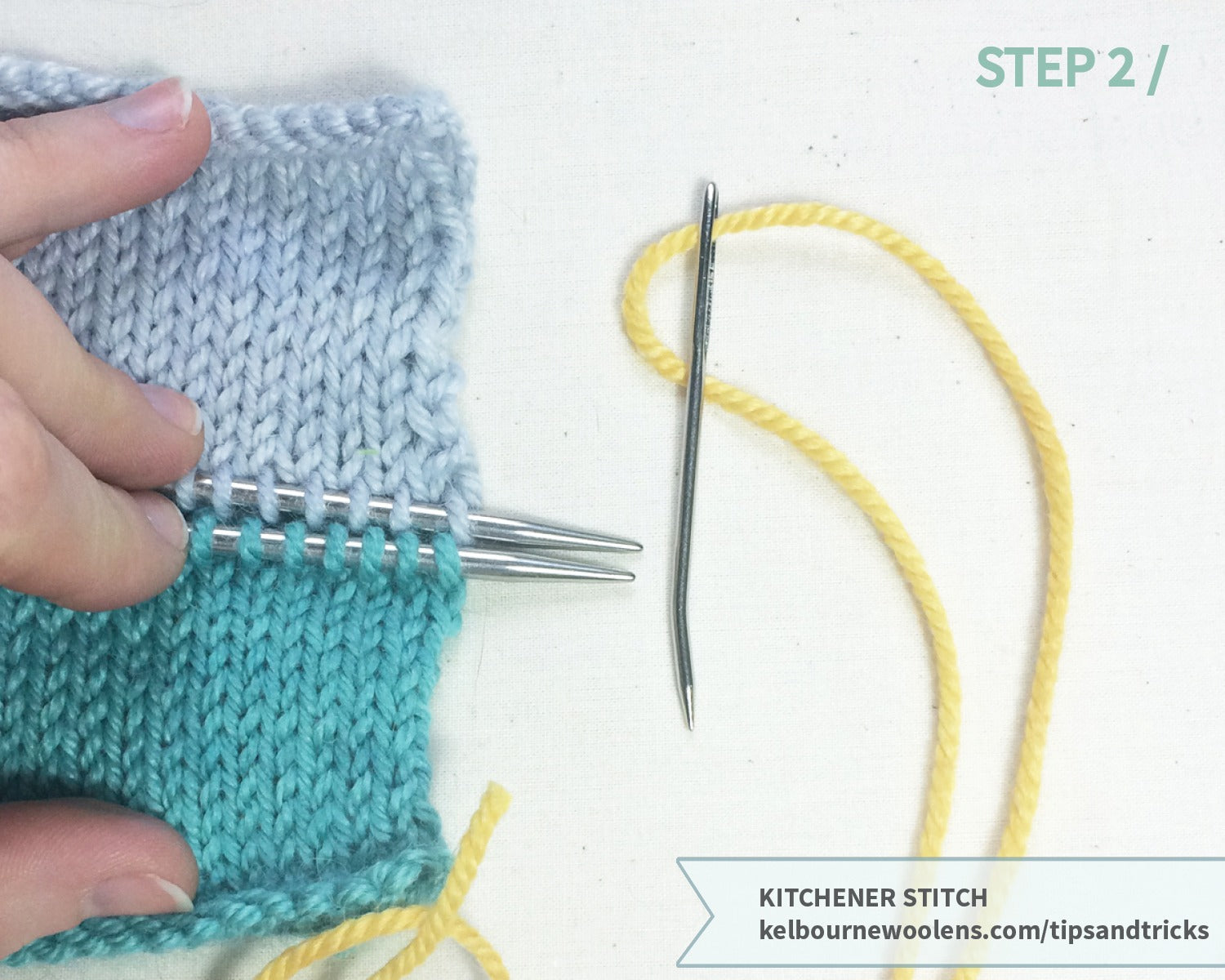
Kitchener stitch is a wonderful finishing technique that connects two opposing pieces of fabric together for a seamless join.
For this tutorial, we are utilizing three different colors so you can clearly see both sets of stitches and the kitchener row. In your actual work, you most likely will be binding off matching pieces of fabric. If you end one piece after working a RS row, you should be able to use the yarn attached to the work for your kitchener stitch. Additionally, it is necessary to have the same number of stitches on each piece in order to work the kitchener evenly.

Step 1 / Set-Up by holding the knit fabric either with WS together, or flat with live stitches facing one another (pictured), and needle points to the right. You may find it useful to transfer your live stitches to DPNs.

Step 2 / Thread your working yarn onto a darning needle. Your working yarn should be at least 3 times the length of your knit fabric.

Step 3 / Insert your darning needle into the first stitch on the front needle as if to purl. Pull the needle through the stitch, but leave the stitch on the knitting needle.

Step 4 / Insert your darning needle into the first stitch on the back needle as if to knit. Pull the needle through the stitch, but leave the stitch on the knitting needle.

Step 5 / Insert your darning needle into the first stitch on the front needle as if you are knitting. Pull the needle through the stitch.

Step 6 / Slide the first stitch on the front off of the needle. *Note: Make sure the stitch you are sliding off of the needle has been worked through two times.*

Step 7 / Insert your darning needle into the first stitch on the front needle as if to purl. Pull the needle through, leave the stitch on the knitting needle.

Step 8 / Insert your darning needle into the first stitch on the back needle as if to purl. Pull the darning needle through the stitch.

Step 9 / Slide the first stitch on the back off of the needle. *Note: Make sure the stitch you are sliding off of the needle has been worked through two times.*

Step 10 / Insert your darning needle into the first stitch on the back needle as if to knit. Pull the needle through, the stitch, but leave the stitch on the knitting needle.


